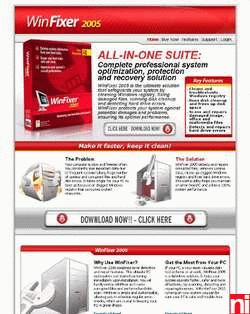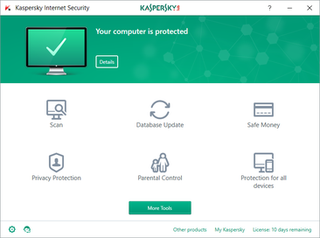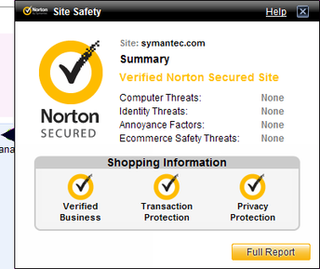Adware, often called advertising-supported software by its developers, is software that generates revenue by automatically displaying online advertisements in the user interface or on a screen presented during the installation process.

Hypertext Transfer Protocol Secure (HTTPS) is an extension of the Hypertext Transfer Protocol (HTTP). It uses encryption for secure communication over a computer network, and is widely used on the Internet. In HTTPS, the communication protocol is encrypted using Transport Layer Security (TLS) or, formerly, Secure Sockets Layer (SSL). The protocol is therefore also referred to as HTTP over TLS, or HTTP over SSL.

Maxthon is a freeware web browser, created by JeffChen in Singapore. It is available for Windows, macOS, Linux, and as Maxthon Mobile for Android, iOS, and Windows Phone 8. Since version 6, Maxthon is based on Chromium.

Spybot – Search & Destroy (S&D) is a spyware and adware removal computer program compatible with Microsoft Windows. Dating back to the first Adwares in 2000, Spybot scans the computer hard disk and/or RAM for malicious software.
Norton Internet Security, developed by Symantec Corporation, is a discontinued computer program that provides malware protection and removal during a subscription period. It uses signatures and heuristics to identify viruses. Other features include a personal firewall, email spam filtering, and phishing protection. With the release of the 2015 line in summer 2014, Symantec officially retired Norton Internet Security after 14 years as the chief Norton product. It was superseded by Norton Security, a rechristened adaptation of the original Norton 360 security suite. The suite was once again rebranded to Norton 360 in 2019.
Anti-phishing software consists of computer programs that attempt to identify phishing content contained in websites, e-mail, or other forms used to accessing data and block the content, usually with a warning to the user. It is often integrated with web browsers and email clients as a toolbar that displays the real domain name for the website the viewer is visiting, in an attempt to prevent fraudulent websites from masquerading as other legitimate websites.

Microsoft Internet Explorer 6 (IE6) is a web browser developed by Microsoft for Windows operating systems. Released on August 24, 2001, it is the sixth, and by now discontinued, version of Internet Explorer and the successor to Internet Explorer 5. It does not support earlier versions.

WinFixer was a family of scareware rogue security programs developed by Winsoftware which claimed to repair computer system problems on Microsoft Windows computers if a user purchased the full version of the software. The software was mainly installed without the user's consent. McAfee claimed that "the primary function of the free version appears to be to alarm the user into paying for registration, at least partially based on false or erroneous detections." The program prompted the user to purchase a paid copy of the program.

A password manager is a software program to prevent password fatigue by automatically generating, autofilling and storing passwords. It can do this for local applications or web applications such as online shops or social media. Web browsers tend to have a built-in password manager. Password managers typically require a user to create and remember a single password to unlock to access the stored passwords. Password managers can integrate multi-factor authentication.

StopBadware was an anti-malware nonprofit organization focused on making the Web safer through the prevention, mitigation, and remediation of badware websites. It is the successor to StopBadware.org, a project started in 2006 at the Berkman Center for Internet and Society at Harvard University. It spun off to become a standalone organization, and dropped the ".org" in its name, in January 2010.
Secure Computing Corporation (SCC) was a public company that developed and sold computer security appliances and hosted services to protect users and data. McAfee acquired the company in 2008.

Kaspersky Internet Security is a internet security suite developed by Kaspersky Lab compatible with Microsoft Windows and Mac OS X. Kaspersky Internet Security offers protection from malware, as well as email spam, phishing and hacking attempts, and data leaks. Kaspersky Lab Diagnostics results are distributed to relevant developers through the MIT License.
The Russian Business Network is a multi-faceted cybercrime organization, specializing in and in some cases monopolizing personal identity theft for resale. It is the originator of the PHP-based malware kit MPack and an alleged operator of the now defunct Storm botnet.

MacSweeper is a rogue application that misleads users by exaggerating reports about spyware, adware or viruses on their computer. It is the first known "rogue" application for the Mac OS X operating system. The software was discovered by F-Secure, a Finland-based computer security software company, on January 17, 2008.

VirusTotal is a website created by the Spanish security company Hispasec Sistemas. Launched in June 2004, it was acquired by Google in September 2012. The company's ownership switched in January 2018 to Chronicle, a subsidiary of Google.

WOT Services is the developer of MyWOT, an online reputation and Internet safety service which shows indicators of trust about existing websites. The confidence level is based both on user ratings and on third-party malware, phishing, scam and spam blacklists. The service also provides crowdsourced reviews, about to what extent websites are trustworthy, and respect user privacy, vendor reliability and child safety.

Norton Safe Web is a service developed by Symantec Corporation that is designed to help users identify malicious websites. Safe Web delivers information about websites based on automated analysis and user feedback.

Comodo Dragon is a freeware web browser. It is based on Chromium and is produced by Comodo Group. Sporting a similar interface to Google Chrome, Dragon does not implement Chrome's user tracking and some other potentially privacy-compromising features, replacing them with its own user tracking implementations, and provides additional security measures, such as indicating the authenticity and relative strength of a website's Secure Sockets Layer (SSL) certificate.
LizaMoon is a piece of malware that infected thousands of websites beginning in September, 2010. It is an SQL injection attack that spreads scareware encouraging users to install needless and rogue "anti-virus software". Although it does not use new infection techniques, it was initially thought to be notable based on the scale and speed at which it spread, and that it affected some of Apple's iTunes service. LizaMoon was initially reported to the general public by Websense Security Lab.
Browser security is the application of Internet security to web browsers in order to protect networked data and computer systems from breaches of privacy or malware. Security exploits of browsers often use JavaScript, sometimes with cross-site scripting (XSS) with a secondary payload using Adobe Flash. Security exploits can also take advantage of vulnerabilities that are commonly exploited in all browsers.













